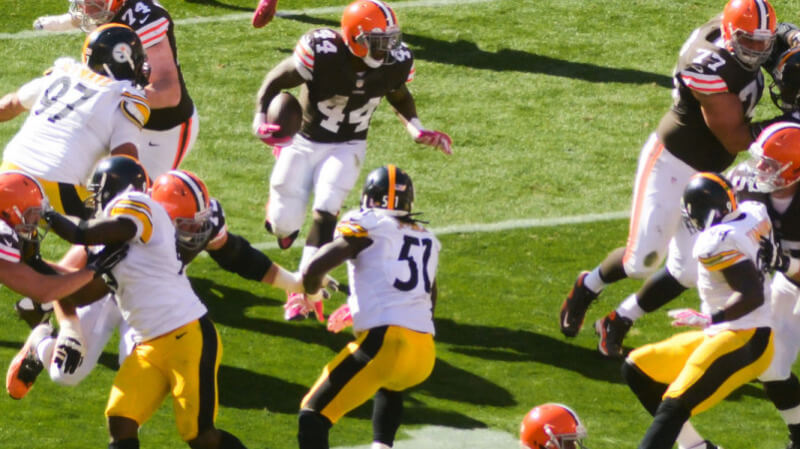
The Steelers won 11 straight home games against the Browns, but should that mean anything the next time they face each other in Pittsburgh? (Photo credit: Erik Daniel Drost / Foter / CC BY)
There are plenty of variables to consider when doing sports handicapping.
Recent records, head-to-head history, home and road splits, injury reports and analysis of other statistics all can be helpful when trying to project which team will win a game.
One other factor that is often considered in the sports handicapping process is trends. Trends can vary in relevance from a team’s record on grass surfaces to a pitcher’s record against hitters wearing pinstriped uniforms during day games in the eastern time zone after banging a hooker the previous night.
So how helpful can trends be to you as a sports handicapper?
Well, they can be an asset in some cases, but they can be your worst enemy a lot of the time as well.
Here are a few things to consider when trying to determine whether trends hold value or whether you should just ignore them.
1. History
The first indicator of whether you should put stock in a trend or not is assessing the history of the trend.
In other words, how long has this trend been in effect? The larger the sample size that you’re looking at, the more legitimate a trend is. The smaller the sample size, the more possibility that the trend is more of an extended coincidence.
For example, if the colour black has come up on the roulette wheel at a 75% rate over the past 20 spins, it’s impossible to conclude with any certainty that black is more likely to come up on the next spin.
But if black has hit at a 62% rate over the past 300 spins, there’s definitely something about this particular roulette wheel that you can take advantage of.
2. Validity
Another thing to consider is whether there is any potential validity behind the trend or if it’s just a statistical oddity that defies logic.
Does the trend itself make sense? Can you determine why a certain trend has emerged with a team?
As an example, a couple years ago, the Baltimore Orioles had an awful record in Sunday games, much worse than their overall winning percentage.
The question bettors had to ask themselves was whether there was something special about Sundays (ie. were the players out at the strip clubs too late on Saturday nights and still bleary-eyed for those Sunday afternoon starts) or was it just a coincidence?
Remember, as Homer Simpson once said, facts can be used to prove anything that’s even remotely true. This can especially be the case in sports handicapping.
3. Relevancy
One final thing to assess before including a trend in your sports handicapping process is the trend’s relevancy.
It’s not uncommon in baseball to hear of pitchers with a fantastic lifetime record against a certain franchise, for example. But circumstances can change that would make those numbers irrelevant, such as roster turnover or individual decline.
Roy Oswalt absolutely dominated the Cincinnati Reds for years, winning 15 straight decisions at one point, and carried a 23-3 career mark against the Reds into a 2010 playoff game. But those 2010 Reds were far different than the team Oswalt used to dominate while he was in the prime of his career, and Cincinnati scored four runs off Oswalt in the first five innings of that game.
Do you really want to base your bet on the Patriots this week on the fact that they’ve won their last five games at Arizona? Nevermind that three of those wins came in the 20th century, before Bill Belichick started dressing like a homeless troll and before Tom Brady came down from the heavens to be anointed as the Chosen One.
Then again, some trends remain relevant over time.
For many years, home underdogs in Monday Night Football covered the spread at a very high rate. The trend made sense, since those teams were jacked up to play on national television and often had a chip on their shoulder about being disrespected by the oddsmakers.
And the trend held true until oddsmakers themselves noticed it and started adjusting their lines accordingly.
Let the trend be your friend
Even if a trend meets all three of these criteria (history, validity and accuracy), it is important not to base your handicapping entirely on trends.
As the old saying goes, “let the trend be your friend”, something that complements an opinion that you form based on stats and situational factors.
Just don’t let a trend talk you into a wager that doesn’t make sense for any other reasons.

